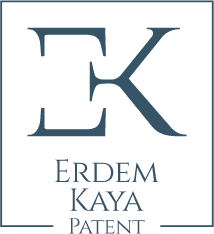Information and Communication Technologies (ICT) is the technical field that receives the largest share of the global patent market. Even though it adapts faster than other legal fields, intellectual property laws and case laws still struggle to keep up with the rapid developments in this area.
In the context of patent laws, inventions in the ICT field are generally referred to as Computer Implemented Inventions (CII). The question of which inventions falling under CII can be protected by patents and which cannot remains a current topic of discussion among intellectual property professionals. As a preliminary note, countries like the USA, South Korea, and Japan take a more inclusive approach to the patenting of computer-implemented inventions, whereas the European Patent jurisprudence, which we also adopt as a country, approaches the subject with more caution. In this article, I will briefly discuss the practice in Europe.
So, what are we discussing? In this article, I will try to explain this to you. I have also used English terms where necessary, as those seeking more detailed information can find many resources on the internet with these correct keywords.
In the patenting of computer-implemented inventions, a “two hurdle approach” is used. The first hurdle is “patent eligibility.” If the claims of a patent application for a computer-implemented invention mention the presence of a hardware (e.g., a computer), this condition is met. This requirement is not unique to computer-implemented inventions. Any claim that does not involve some kind of hardware (electronic or mechanical) would be directly rejected as it merely defines a mental act.
The second hurdle is the inventive step. This criterion applies to all patent applications, but it becomes a bit more ambiguous in the case of computer-implemented inventions.
In the examination of the inventive step for computer-implemented inventions, only elements contributing to the technical problem are considered. Computer-implemented inventions contain both technical elements (computer, mobile phone) and non-technical elements (computer program). The assessment of the inventive step for such inventions is carried out within the framework of the Comvik approach, as set forth in the 2002 decision of the European Patent Office Technical Board of Appeal. In the Comvik approach, only the elements contributing to the solution of the technical problem are included in the assessment of the inventive step. Even if this element is a non-technical element on its own (such as a computer program), it is taken into account if it contributes to the technical problem.
I would like to explain this approach with two simple examples. Let’s consider a patent application for a software that selects the most suitable candidate for a pre-defined position by an employer based on criteria (education, profession, region, etc.) by scanning candidate resumes. If the independent claim of the patent application mentions that this process is carried out by a computer, the first hurdle of patent eligibility is overcome. On the second hurdle, this invention addresses an administrative problem rather than a technical one (making the candidate selection process more efficient). Therefore, there is no technical problem being solved, and naturally, there is no element contributing to the technical problem. In this case, the examiner will reject the patent application on the grounds that it does not meet the inventive step criterion without further evaluation.
For such software, the only way is to protect the software name with trademark registration, the software codes with copyright, and the user interfaces with either copyright or design registration. Of course, these instruments provide legal protection largely against direct or very similar copies, rather than offering the broad protection that a patent right would provide.
Another example could be a patent related to software on an industrial computer connected to a laser cutting machine that extends the maintenance process of the laser cutting machine. Extending the time before a machine requires maintenance solves a technical problem. In this case, the examiner will look at which elements solve this problem. Let’s assume that the independent claim of this patent application includes both technical elements (an industrial computer) and non-technical elements (a machine control software running on the industrial computer and a maintenance statistics software). The examiner will not consider the maintenance statistics software during the inventive step assessment, as this software provides a solution in the realm of “presentation of information,” which is outside the scope of patentable subject matter. On the other hand, the examiner will consider the working principle (algorithm) provided in the claims related to the machine control software and will analyze whether this working principle could be obviously derived by a person skilled in the art based on prior knowledge, and thus decide on the presence of an inventive step.
As I conclude my article, I would like to inform you about a recent development in this field. The Enlarged Board of Appeal of the European Patent Office (EPO) has recently announced its long-awaited decision regarding the patentability of certain computer simulations (G1/19 decision). This decision essentially states that patent applications related to computer simulations can be evaluated in the same way as other computer-implemented inventions, in other words, using the COMVIK approach. From this, I infer that the European Patent Office is trending towards granting patents for computer simulations that produce data contributing to the solution of a technical problem in the physical world, and even for pure artificial intelligence algorithms. However, the direction of future decisions will make this clearer. In my next article, I will delve into this topic in more detail.
I hope I have provided you with useful information in this article.
Wishing you healthy and peaceful days.





